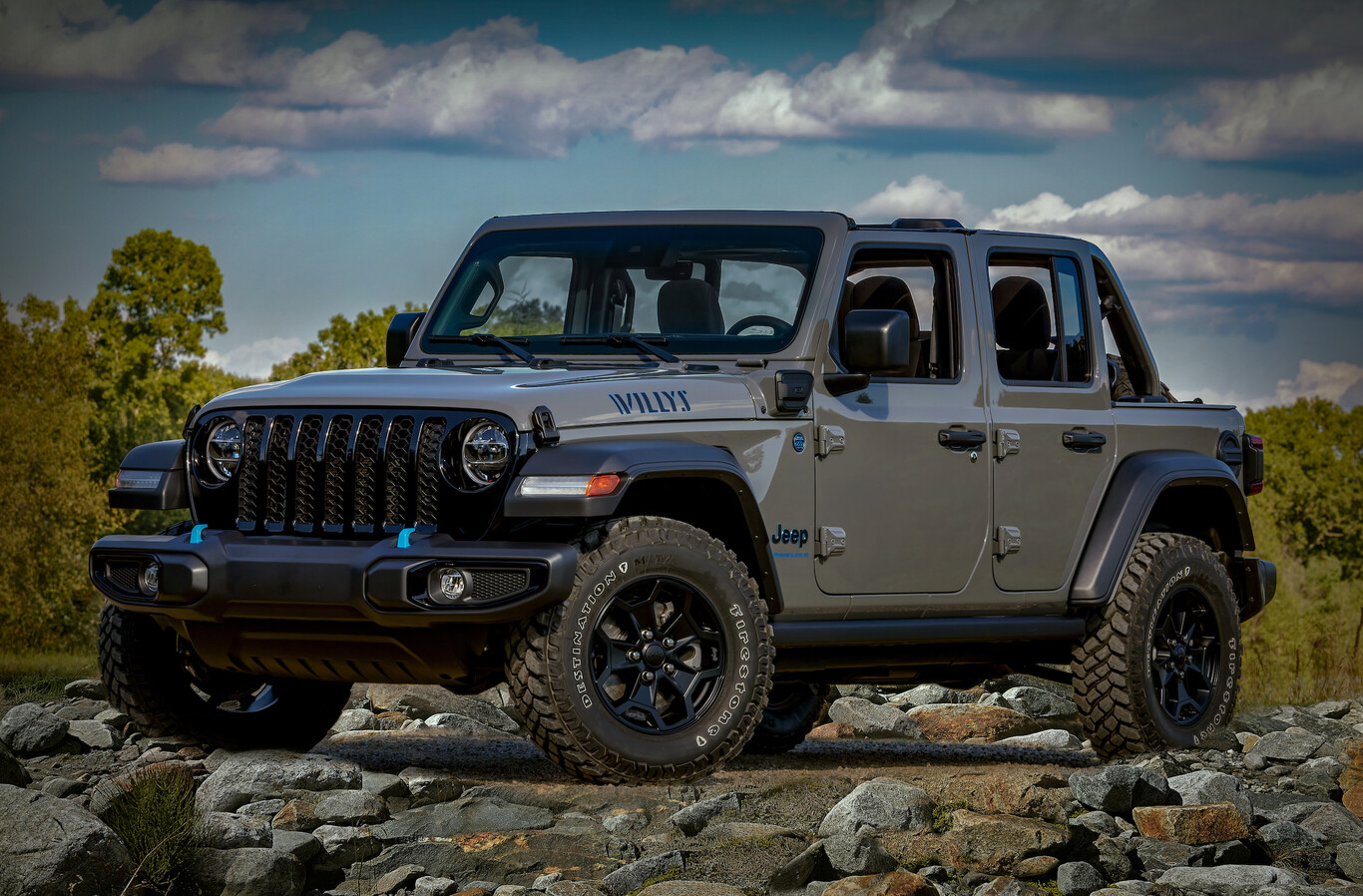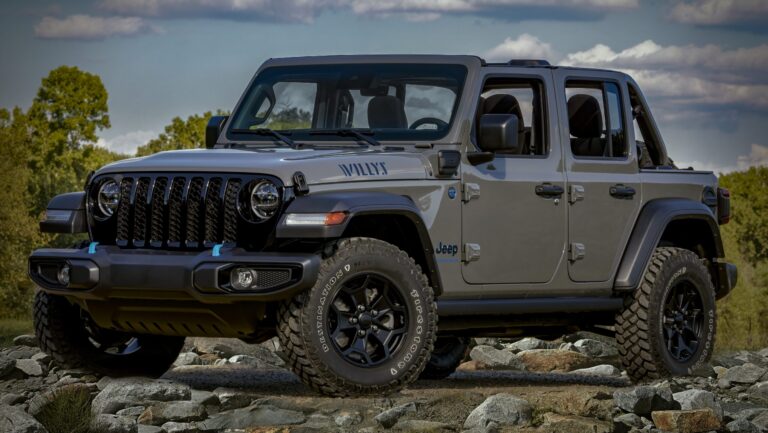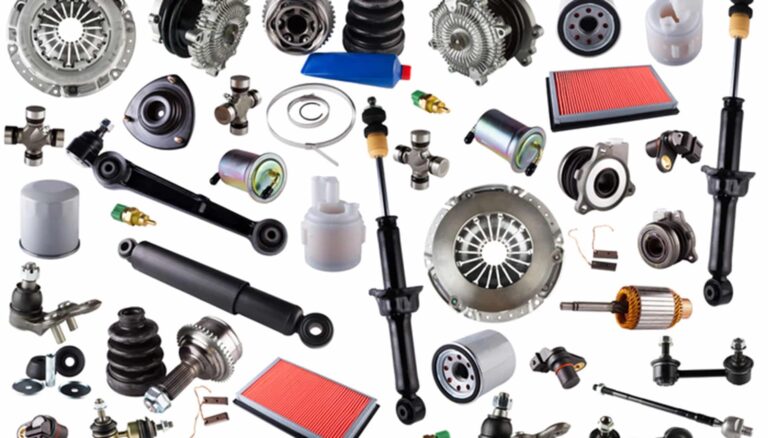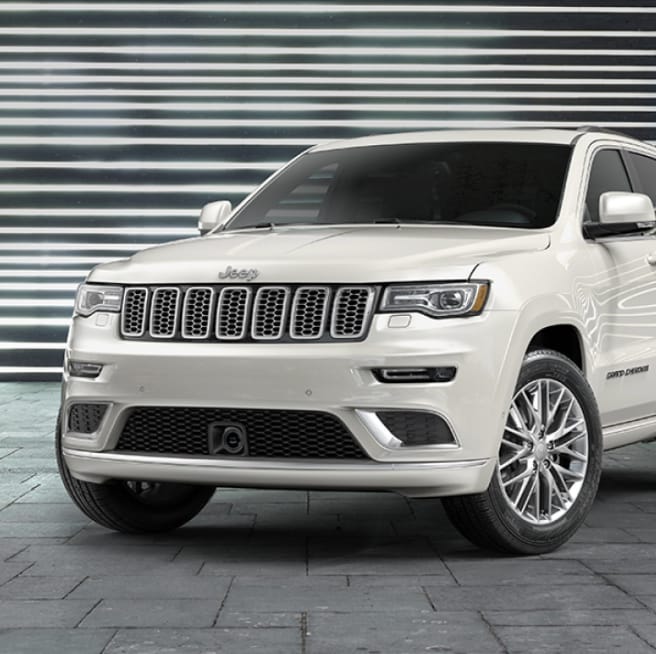Jeep XJ Bumpers For Sale: The Ultimate Guide to Upgrading Your Cherokee
Jeep XJ Bumpers For Sale: The Ultimate Guide to Upgrading Your Cherokee jeeps.truckstrend.com
The Jeep Cherokee XJ, produced from 1984 to 2001, is an icon of simplicity, ruggedness, and unparalleled off-road capability for its era. Despite its age, the XJ remains a beloved platform for off-road enthusiasts, daily drivers, and project builders alike. While the stock XJ is capable, its factory bumpers often leave much to be desired in terms of protection, utility, and aggressive aesthetics, especially when venturing off the beaten path. This is where the world of aftermarket Jeep XJ Bumpers For Sale comes into play, offering a vast array of options to transform your Cherokee into a more formidable and functional machine.
Upgrading your XJ’s bumpers isn’t just about making it look tougher; it’s a critical investment in your vehicle’s safety, recovery capabilities, and overall longevity. From offering superior protection against trail obstacles and minor impacts to providing essential mounting points for winches, auxiliary lights, and spare tires, aftermarket bumpers are an indispensable modification for any serious XJ owner. This comprehensive guide will delve deep into everything you need to know about purchasing and installing bumpers for your Jeep Cherokee XJ, ensuring you make an informed decision that perfectly suits your needs and adventures.
Jeep XJ Bumpers For Sale: The Ultimate Guide to Upgrading Your Cherokee
Why Upgrade Your XJ Bumper? Beyond the Stock Look
The factory bumpers on a Jeep XJ are designed primarily for street use and light impacts. For anyone looking to explore trails, tackle challenging terrain, or even just enhance their vehicle’s robustness, an aftermarket bumper is a necessity. Here’s why upgrading is a game-changer:
- Enhanced Protection: Stock bumpers offer minimal protection against rocks, trees, and other trail hazards. Aftermarket steel or aluminum bumpers provide a robust barrier, safeguarding critical components like your radiator, engine, and rear quarter panels from damage during off-road excursions or even low-speed impacts.
- Improved Recovery Capabilities: Most aftermarket front bumpers come equipped with heavy-duty recovery points (like D-ring shackle mounts) that are welded directly to the bumper and often tie into the vehicle’s frame. Rear bumpers can also offer recovery points and integrated hitch receivers, crucial for safely extracting your vehicle or assisting others.
- Winch Integration: For serious off-roading, a winch is almost a requirement. Many aftermarket front bumpers are "winch-ready," meaning they are designed to house and support the weight and forces exerted by a recovery winch, keeping it protected and seamlessly integrated.
- Auxiliary Lighting: The trails often demand more light than factory headlights can provide. Aftermarket bumpers typically feature integrated mounts for fog lights, driving lights, or LED light bars, significantly improving visibility during night driving or adverse weather conditions.
- Spare Tire Carrier: The stock spare tire location on an XJ (inside the cargo area) takes up valuable space and can be difficult to access. Many aftermarket rear bumpers incorporate a swing-out tire carrier, allowing you to carry a larger spare tire externally, freeing up interior space and improving accessibility.
- Increased Approach and Departure Angles: Factory bumpers can often snag on obstacles due to their design. Aftermarket bumpers are often designed with improved angles, allowing your XJ to clear larger obstacles without scraping.
- Aesthetics and Personalization: Let’s face it, aftermarket bumpers look cool. They give your XJ a more aggressive, capable, and customized appearance that truly stands out.


Types of Jeep XJ Bumpers: Finding Your Perfect Match
The market for Jeep XJ bumpers is diverse, offering a range of designs and functionalities to suit different needs and preferences.
Front Bumpers
- Full-Width Bumpers: These extend across the entire front of the vehicle, offering maximum protection to the fenders and grille. They often include integrated fog light mounts and winch provisions. Ideal for those seeking comprehensive front-end protection.
- Mid-Width Bumpers: A balance between full-width and stubby, these bumpers offer good protection while potentially improving approach angles slightly more than full-width options.
- Stubby Bumpers: Designed to be narrower than the XJ’s grille, these bumpers maximize approach angles, making them popular for serious rock crawling where every inch counts. They often have integrated winch mounts and D-ring tabs but offer less protection to the outer fenders.
- Hybrid/Tube Bumpers: Combining plate steel for strength around the winch and frame mounts with tubular steel for the outer sections, these offer a blend of protection, light weight (compared to full plate), and a distinct aesthetic.
- Lightweight Aluminum Bumpers: While less common than steel, aluminum bumpers offer significant weight savings, which can be crucial for maintaining ride quality, fuel economy, and reducing stress on the suspension. They still offer excellent protection for most trail scenarios but might not withstand extreme rock impacts as well as heavy steel.

Rear Bumpers
- Standard Rear Bumpers: These replace the factory bumper, offering improved protection, recovery points, and often a receiver hitch for towing or accessories.
- Rear Bumpers with Tire Carrier: The most popular option for XJ owners, these bumpers integrate a swing-out arm that holds the spare tire, moving it from the cargo area to the outside. This frees up interior space and allows for larger tires that wouldn’t fit inside. Many also include mounts for jerry cans, high-lift jacks, or other trail accessories.
- Corner Guards/Integrated Bumpers: Some rear bumper systems also incorporate corner protection that wraps around the rear quarter panels, offering comprehensive rear-end defense.
Material & Finish
- Steel: The most common material due to its strength, durability, and relatively lower cost. Steel bumpers are heavy but offer maximum protection. Most come powder-coated for corrosion resistance, but bare steel is also available for custom painting.
- Aluminum: Lighter than steel, reducing overall vehicle weight and improving fuel economy/suspension performance. Offers excellent corrosion resistance. Typically more expensive than steel.
- Powder Coat: A durable, chip-resistant finish that protects the metal from rust and corrosion. Available in various colors, but black is standard for most off-road bumpers.
Key Features to Look For When Buying
When browsing Jeep XJ Bumpers For Sale, consider these essential features to ensure you get the most out of your investment:
- Recovery Points: Ensure the bumper has robust, frame-mounted D-ring shackle tabs. These are critical for safe vehicle recovery.
- Winch Compatibility: If you plan to run a winch, confirm the front bumper is designed to accommodate it, including the winch plate and fairlead mount.
- Lighting Mounts: Check for pre-drilled holes or integrated mounts for auxiliary lights (fog lights, cubes, light bars).
- Tire Carrier (for Rear): If opting for a rear bumper with a tire carrier, ensure it’s robust enough for your tire size, has a secure latching mechanism, and ideally features adjustable stops to prevent rattling.
- Receiver Hitch: A class III (or higher) integrated receiver hitch on the rear bumper is excellent for towing or mounting accessories like bike racks.
- Approach/Departure Angles: Examine the bumper’s design to see how it improves your XJ’s ability to clear obstacles. Minimal overhang and angled edges are beneficial.
- Material Thickness & Construction: Look for heavy-gauge steel (typically 3/16" or 1/4") or equivalent aluminum, with strong welds and reinforcement where needed.
- Installation Method: Most bumpers bolt directly to the XJ’s unibody frame rails. Some require minor drilling, while others are a direct bolt-on.
Where to Find Jeep XJ Bumpers For Sale
The market for aftermarket XJ parts is robust. Here’s where you can typically find bumpers:
- Online Off-Road Retailers: Websites like Quadratec, ExtremeTerrain, Morris 4×4 Center, and Northridge4x4 specialize in Jeep parts and offer a wide selection from various manufacturers.
- Direct from Manufacturers: Many reputable manufacturers like JCR Offroad, Smittybilt, Rusty’s Offroad, Ares Fabrication, and Dirtbound Offroad sell directly from their websites, often offering detailed product information and support.
- Amazon & eBay: You can find a mix of budget-friendly options and established brands here, but always check seller reviews and product descriptions carefully.
- Local Off-Road Shops: Many local 4×4 shops stock popular brands or can order them for you. They can also offer installation services.
- Used Market: Websites like Facebook Marketplace, Craigslist, and dedicated Jeep forums (e.g., CherokeeForum.com, NAXJA.org) are great places to find used bumpers at a reduced price. Exercise caution and inspect the item thoroughly before purchasing.
Installation Guide: General Tips for Bolting On Your New Bumper
While specific instructions vary by manufacturer and bumper type, the general process for installing an XJ bumper involves these steps:
- Gather Tools: You’ll typically need a socket set, wrenches, a torque wrench, a grinder (for some trimming), a jack and jack stands, and possibly a second set of hands.
- Safety First: Always work on a level surface, use jack stands, and wear appropriate safety gear (gloves, eye protection).
- Remove Old Bumper: This usually involves unbolting the factory bumper and any associated brackets. You may need to disconnect fog lights or other accessories.
- Clean Frame Rails: Ensure the mounting surfaces on your XJ’s unibody frame rails are clean and free of rust or debris.
- Test Fit: Before final tightening, test fit the new bumper. Some aftermarket bumpers require minor trimming of the fender flares or body for optimal fitment.
- Bolt-On Installation: Align the bumper with the factory mounting points (or new holes if drilling is required) and loosely attach all hardware.
- Tighten Hardware: Once everything is aligned, progressively tighten all bolts to the manufacturer’s specified torque settings.
- Install Accessories: Mount your winch, lights, D-rings, or tire carrier (if applicable) according to their instructions.
- Final Check: Double-check all bolts for tightness and ensure everything is secure before driving.
DIY vs. Professional Installation: Many XJ bumper installations are manageable for the average DIYer with basic mechanical skills. However, if you’re unsure, or if the bumper requires complex modifications, professional installation by an experienced off-road shop is recommended.
Important Considerations Before Buying
Before you commit to a purchase, take these factors into account:
- Budget: Bumpers range from a few hundred dollars to over a thousand. Set a realistic budget that balances cost with desired features and quality.
- Intended Use: Are you a daily driver who occasionally hits light trails, or are you planning extreme rock crawling? Your use case will dictate the level of protection, features, and material you need.
- Weight Impact: Steel bumpers are heavy. Adding 100-200+ lbs to your XJ, especially upfront with a winch, will affect your suspension. You might need to upgrade your front coil springs or rear leaf springs to compensate for the added weight and maintain ride height.
- State and Local Regulations: Some regions have laws regarding bumper height, width, and sharp edges. Always check your local regulations to ensure your chosen bumper is street legal.
- Aesthetics vs. Functionality: While looks are important, prioritize functionality and protection. A bumper that looks great but doesn’t meet your needs is a poor investment.
- Compatibility with Other Mods: Ensure the bumper will clear any existing modifications like larger tires, fender flares, or lift kits.
Maintaining Your XJ Bumper
Once installed, your aftermarket bumper will serve you well for years with proper care:
- Regular Cleaning: Wash off mud, dirt, and road salt to prevent corrosion, especially in the seams and around recovery points.
- Inspect for Damage: After off-road trips, inspect the bumper for scrapes, dents, or chipping paint.
- Touch-Up Paint/Coating: Promptly touch up any scratches or chips in the powder coat to prevent rust from forming. Use rust-inhibiting primer before painting.
- Check Hardware: Periodically check all mounting bolts for tightness, especially after the first few drives or challenging off-road trips.
Jeep XJ Bumpers For Sale: Estimated Price Table
Prices for Jeep XJ bumpers vary widely based on material, features, brand, and complexity. This table provides estimated price ranges for common types:
| Bumper Type | Material | Key Features | Estimated Price Range (USD) | Notes |
|---|---|---|---|---|
| Front Bumpers | ||||
| Basic Stubby | Steel | Minimalist design, D-ring tabs | $300 – $600 | Good approach angle, less fender protection. |
| Winch-Ready Stubby | Steel | Winch plate, D-ring tabs, light mounts | $500 – $900 | Most popular for serious off-roaders. |
| Full-Width Plate | Steel | Max protection, D-ring tabs, light mounts | $600 – $1100 | Comprehensive front-end protection. |
| Hybrid/Tube | Steel | Plate center, tube outer, winch/light mounts | $700 – $1200 | Blend of strength, weight, and aesthetics. |
| Lightweight Aluminum | Aluminum | Winch plate, D-ring tabs, light mounts | $900 – $1500+ | Significantly lighter, great for weight-conscious builds. |
| Rear Bumpers | ||||
| Basic Rear | Steel | D-ring tabs, integrated hitch receiver | $400 – $700 | Replaces stock, improved protection and utility. |
| Rear w/ Tire Carrier | Steel | Swing-out tire carrier, D-ring tabs, hitch | $700 – $1300 | Frees up interior space, allows larger spare. |
| Rear w/ Tire Carrier & Accessories | Steel | Tire carrier, Hi-Lift/Jerry can mounts, hitch | $900 – $1600+ | Comprehensive rear solution for extended trips. |
Note: Prices are estimates and can fluctuate based on brand, specific features, material thickness, finish, and current market conditions. Installation costs are typically separate if done professionally.
Frequently Asked Questions (FAQ) About Jeep XJ Bumpers For Sale
Q1: Do I really need an aftermarket bumper for my XJ if I don’t off-road much?
A1: While not strictly necessary for street use, an aftermarket bumper offers significantly better protection in minor collisions, can enhance aesthetics, and provides a safer recovery point even for simple tasks like pulling out a stuck lawnmower. If you ever plan to hit a dirt road, it’s a wise investment.
Q2: How much weight do aftermarket XJ bumpers add?
A2: A steel front bumper can add 80-150 lbs, and a rear bumper with a tire carrier can add 100-200 lbs. Adding a winch increases the front weight by another 60-100 lbs. This added weight can cause your suspension to sag, making a spring upgrade (e.g., heavy-duty coils in front, heavier leaf springs in rear) a common necessity.
Q3: Can I install a Jeep XJ bumper myself?
A3: Yes, most XJ bumpers are designed to be bolt-on installations that can be done by a DIY enthusiast with basic mechanical knowledge and tools. However, some installations may require minor cutting, drilling, or an extra set of hands. Always follow the manufacturer’s instructions carefully.
Q4: What’s better: steel or aluminum bumpers for an XJ?
A4: Steel offers maximum strength and is typically more affordable, making it ideal for heavy rock crawling or extreme use. Aluminum is significantly lighter, which benefits fuel economy, ride quality, and reduces stress on the unibody and suspension. Aluminum is excellent for general trail use and overlanding where weight savings are a priority, but may not withstand the same level of direct rock impacts as thick steel.
Q5: Do I need a lift kit to install an aftermarket bumper on my XJ?
A5: No, a lift kit is not required to install an aftermarket bumper. However, if the bumper adds significant weight (especially steel with a winch), you might experience suspension sag. Many XJ owners choose to upgrade their suspension (e.g., heavy-duty springs) to compensate for the added weight and restore ride height, which often results in a mild lift.
Q6: Will a rear bumper with a tire carrier block my view?
A6: A swing-out tire carrier will partially obstruct your rear view, especially if you carry a large tire. Most XJ owners adapt quickly, relying more on side mirrors. Some choose to install a backup camera for better visibility.
Conclusion: Investing in Your XJ’s Future
Choosing the right aftermarket bumper for your Jeep Cherokee XJ is one of the most impactful modifications you can make. It’s not merely an aesthetic upgrade; it’s a fundamental enhancement to your vehicle’s protection, utility, and overall capability. Whether you’re navigating challenging trails, needing robust recovery points, or simply wanting to give your classic XJ a more aggressive and modern stance, the market for Jeep XJ Bumpers For Sale offers a solution for every need and budget.
By understanding the different types, key features, and important considerations, you can confidently select a bumper that will serve you well for years to come. It’s an investment that pays dividends in peace of mind, increased functionality, and countless adventures on and off the road. Equip your XJ properly, and it will continue to be the legendary workhorse it was always meant to be.



